The Flying, Driving Automobile
Are you stuck for the perfect gift for the pilot in your life?
I’ve got a guest post for you this week which may help! Aria Wrigley takes a look at the latest innovations in fly-drive vehicles.
Aria is my daughter and I am delighted to have a guest post from her.
And Santa, if you are reading this, any one of them would be just perfect for Christmas morning.
Flying cars show up in everything from Star Wars to Doctor Who. They instantly capture the curiosity. Their appearance is so close to our already extant cars, but adding a whole other dimension (literally) to our daily commute!
While we are still a ways off from seeing the use of these cars in every city and town, there are many interesting examples already in production or even on the market! These are my favourites.
Terrafugia
In car mode, the Terrafugia might draw attention for the wrong reasons: its clunky design and large, very visible propeller reminds me more of a makeshift submarine than anything. However, looks can be deceiving! This little bundle of mechanical engineering, dubbed the “Transition®”, is most striking due to its dual function. The folding wings allow it to swap between driving and flying. The top flight speed of the flying car is a eye-watering 100 knots (115 mph), which is pretty quick for a ground-bound car, but a little slow for a plane. The vehicles will stretch a bit further than your daily commute, having a range of 490 miles, which makes it nice and easy to pop out to the shop a couple of cities over and back.
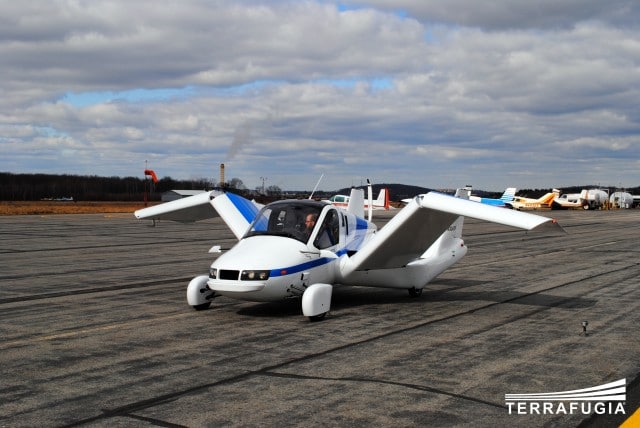
The main drawbacks of the design are its limited space. The cockpit has room for two people and not really a whole lot else. It also requires a take-off strip of 1,700 feet (518 metres) which rather forbids everyday usage without a commute to an airfield for every journey. Nonetheless, it’s an interesting first step.
Terrafugia TF-X
No, I’m not repeating myself, this is a conceptual little brother to the Transition, aiming for a number of improvements of the issues I raised with the original. Its design is more sleek and futuristic, though it still features two rather noticeable folding sections. The big difference is that the TF-X features vertical take-off and landing. This discards the need for a runway, and allows much more convenient point to point travel. It also runs on a hybrid battery/gasoline system, with the 300 hp engine charging the battery while in the air.
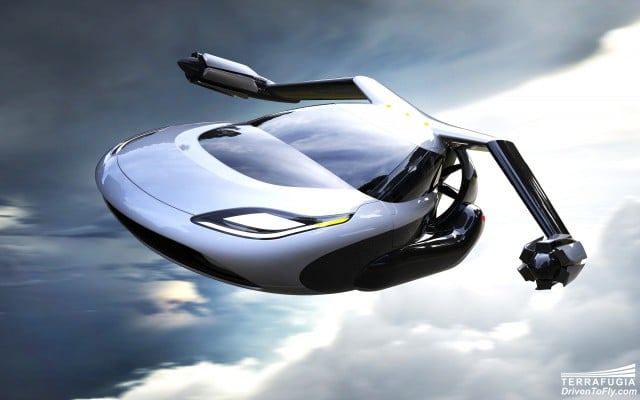
Unfortunately, it shares some key concerns with its predecessor. While the TF-X can hold four people in “car like comfort”, there’s still no boot space, and its range is a barely improved 500 miles. Additionally, the company itself admits that the TF-X is expected to be at least 8-12 more years in development, let alone manufacturing time.
Klein Aeromobil
In a lot of ways, the Aeromobil is a front-runner, with a unique, stylish look that offsets the necessary clunkiness with lovely design. It’s also faster then its competitors, flying at 109 knots (124 mph), it can take you as far as 434 miles while flying. The Aeromobil was on track to be on the market within 2 years. What could possibly slow down this leader of the pack?
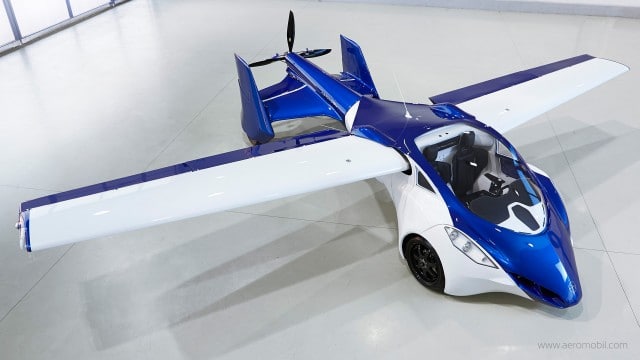
Errr, well, crashing. In May 2015, the prototype of the Aeromobil was being flown by the company co-founder, when it appears to have stalled and required the deployment of the whole-aircraft parachute (that is, a whopping great parachute that slows the descent of the whole vehicle). The pilot escaped with no injuries, but unfortunately the prototype was destroyed in the impact. Klein insist that the project is on time and that the crash wouldn’t hold them back, but still, not a great start!
LaBiche Overdrive
The Overdrive is interesting for a number of reasons. For one, the prototype most looks like an actual car, with wings and propeller shifting into position like a giant transformer. It also comes from a company that had previous experience with flying cars (The FSC-1, which was previously under development by LaBiche Aerospace, as opposed to LaBiche Automotive); although that project fizzled out in 2010, it seems to have been revived in 2015. But the real eye catcher here is the fact that the Overdrive was the first flying car… to be Kickstarted!
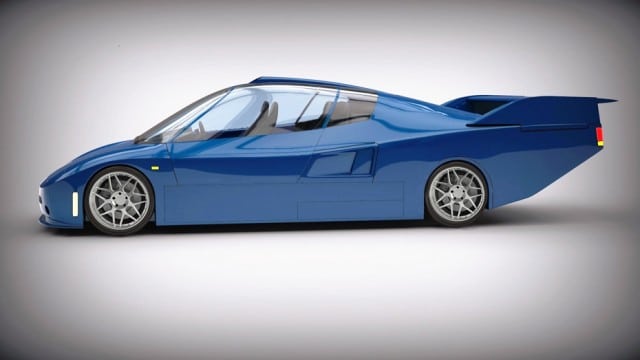
Kickstarter is a platform for a form of fundraising called crowdfunding, assembling large amounts of money via many smaller donors. While LaBiche asked for a rather small sum (by the scale of automobile development), they fell short of their goal: the campaign failed in August 2014. Despite this, LaBiche insisted they were still working on the project. There’s been scant updates since, but the Overdrive remains a unique contender on the market!
Parajet Skyquad
In some regards, the Skyquad seems unremarkably similar to other takes on the concept, using a large propeller to propel a lightweight, all-terrain buggy frame. The design itself is sleek and modern, black carbon fibre/glass composite and a obviously professionally designed ergonomic interior. There’s one feature missing from all the concept art and picture though… where are the wings?
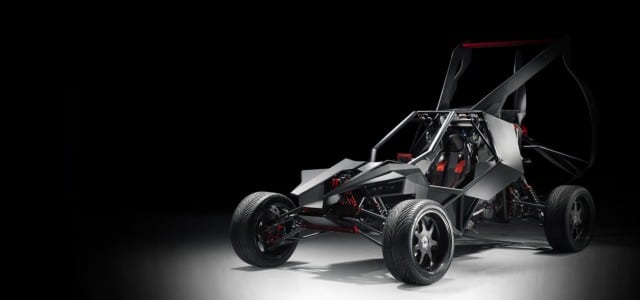
No, they don’t fold out of some hidden compartment. The Skyquad’s biggest innovation is that, instead of using wings as a means of staying aloft, it uses a paraglider, with the large, rear mounted propeller providing thrust. It’s easy to see where the inspiration was drawn, as Parajet is a paragliding company who specialize in propeller assisted recreation. This design allows a low take-off speed (less, or even no runway, due to the all-terrain nature), but lacks when it comes to speed and range, the car maxing out at a rather lacklustre 87 kts (100 mph) in the air, though it boasts a more impressive 140 mph (225 kmh) top speed on the ground. The Skyquad is obviously more recreation then commuter vehicle, but its beautiful design and unique approach makes it a serious contender for the recreational market.
Plane Driven PD-2
All of the above examples have approached the problem with two fundamental assumptions. One, that the underlying start point of the system should be a car, and two, that massive modification will be needed to make it take flight. In principle, this makes sense. After all, it’s not like you can just strap on wings to a car and make it fly.
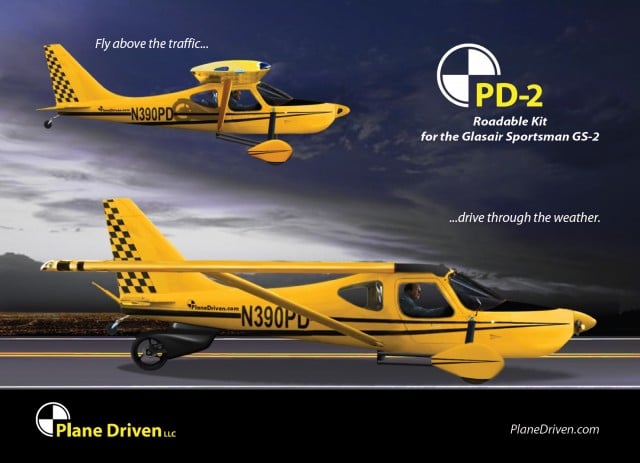
But what if you approach the idea from making a plane roadworthy? Plane Driven LLC have taken a Glasair Sportsman plane and, with a new drive pod and a attached wheel, made the plane road worthy and legal! As a result, the PD-2 has some of the best specs for a “flying car”, flying at a hair raising 150 mph (241 kph). This does come at a price however, the plane having to be either purpose made to fit the PD-2 kit, or converted by Glasair to allow it. It also uses two different fuel tanks, functionally doubling the amount of weight and cost. Ultimately the hardest bullet to swallow is that you’d need to buy a full, actual plane and pay for its modification to the PD-2, making it a sizable investment even in relation to other flying cars.
Ultimately, none of the flying cars currently available or coming in the near future are without flaw, but the underlying point still proves true: We have flying cars. The future may be grimy, full of crashing and crowdfunding and high price tags, but the future is here!
Hopefully as time goes on and interest surges, we’ll see more and more contenders come to the field. I personally can’t wait to get an Apple iFly.








Sorry for being a spoil-sport, but I cannot see this hitting the market any time soon.
Some 50 years ago a few efforts have been made to produce a vehicle that could be used on the road as well as in the air. Apart from a few prototypes the Aerocar and similar projects never “took off”.
And the “why” is not difficult to understand. Because, apart from the fact that it is a compromise and will be a poor car and a poor aircraft, there are legal issues that cannot be solved so easily.
As an aircraft, it will need a C of A. If sold as a kit, it may get away with a classification as “experimental”, but the vehicle will be rather complicated, have limited use and the project will be way beyond the ability of even competent amateur builders.
As a car, in most countries, it will have to be tested. In the UK: a MoT.
The vehicle will in fact have to pass several tests, perhaps contradictory.
As an aircraft, it will have characteristics that make it unstable on the road. As a car, it will have features that do not suit an aircraft. For one, it will have to be very light, which may affect the roadholding.
How to operate it will be a legal nightmare. Will it be okay to operate it on a pilot’s licence. Would the pilot also require a driving licence?
Will it require licence plates as well as a tail number ?
Will it be insurable ?
Road surfaces are another challenge. Generally speaking roads are more prone to potholes, debris and perhaps chemicals that can affect the “carcraft”, e.g.In winter many roads are gritted. The fuselage may be made from fibreglass, but other components will be affected by the salt that is in the grit. Will it need special permission to take off from the road?
Coordination of the controls is another stumbling block. The steering wheel will double as a control yoke. Complicated design work.
And all the extras that will have to be taken into account will, no doubt, increase the weight of it. So it will have a disappointing payload.
These are the things that come to mind and I have barely started.
So no, a nice idea but I will not invest in shares in the companies that propose to built them.
Awwww, bet you don’t think I’ll get a jetpack for new year’s, either. :(
So Labiche are trying again? The new design looks identical to the old one, which, as a kid I have been excited about ever since I found out about it!
Now that I’ve grown up, I have to say I’m a lot more skeptical. For a start, I worry about any company that takes orders before they’ve actually made the product, which is what they’re currently doing!
I also worry about the type of engine that they are using. With the FSC-1 they planned to use the GM LS2 engine. It’s probably a perfectly capable engine in a car, but it’s not an aircraft engine! You run into all sorts of problems when trying to use an automotive engine in a plane. There are some very capable modified car engines being used in aircraft but the key word here is MODIFIED!
It’s a moot point for me anyway, since aircraft ownership of all types is well outside my price range. But if they can get this working, and I can find the cash, you betcha I’ll have one! :D
In terms of design, this one is my favourite:
http://news.nationalgeographic.com/content/dam/news/photos/000/769/76904.ngsversion.1422286119615.adapt.768.1.jpg
Ah yes definitely! The older designs are always the best! :)
Actually now that I think about it, I’d say that the TF-X probably looks the most like the flying cars that Hollywood has dreamed up! (The only difference being that it’s still held aloft by real wings, rather then “unobtainium,” or some such similar nonsense! :D)